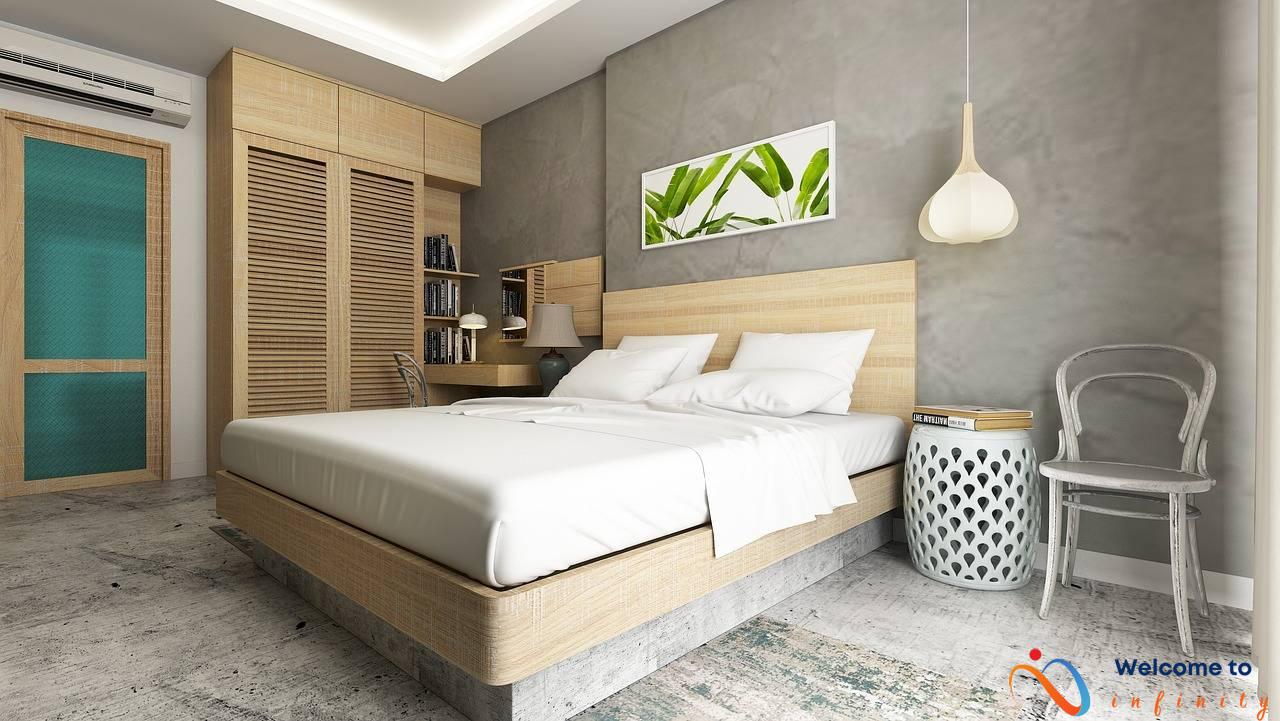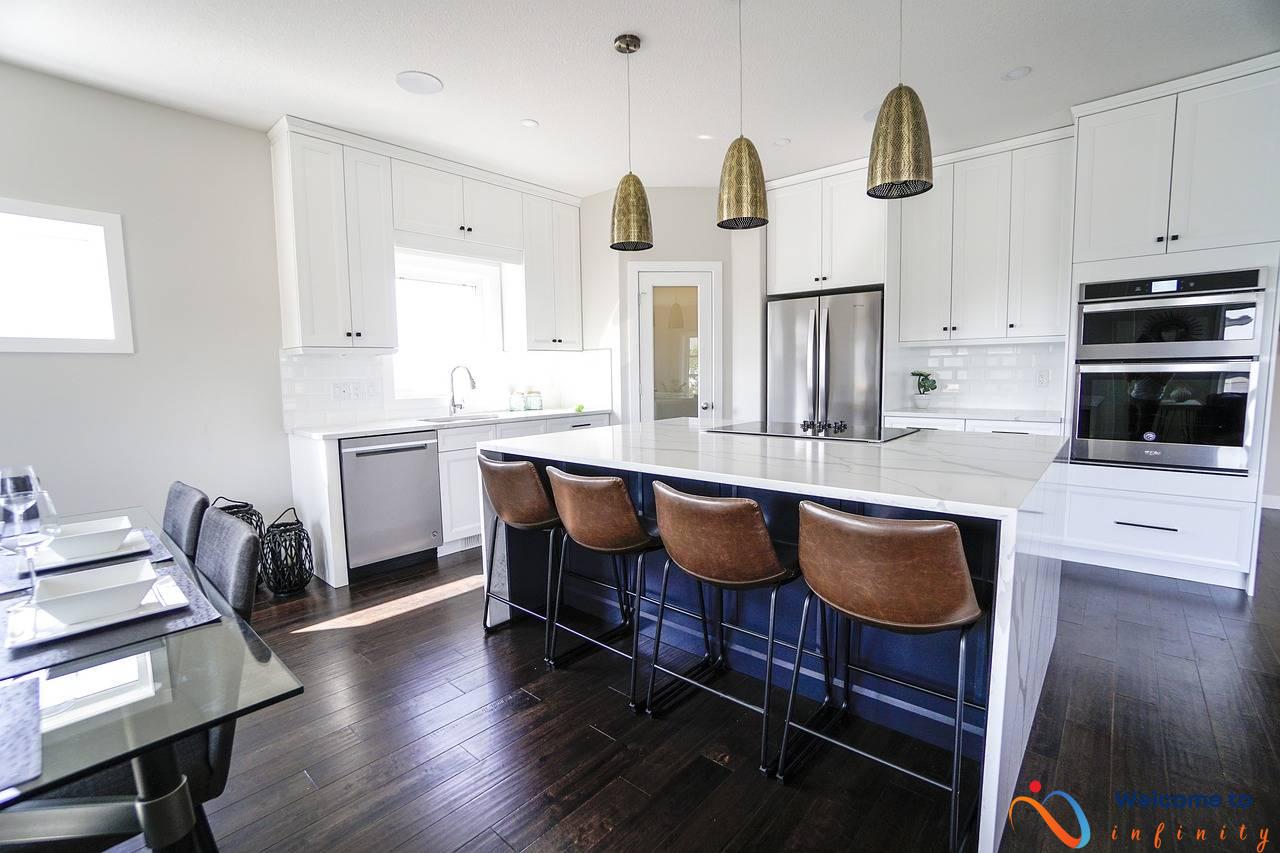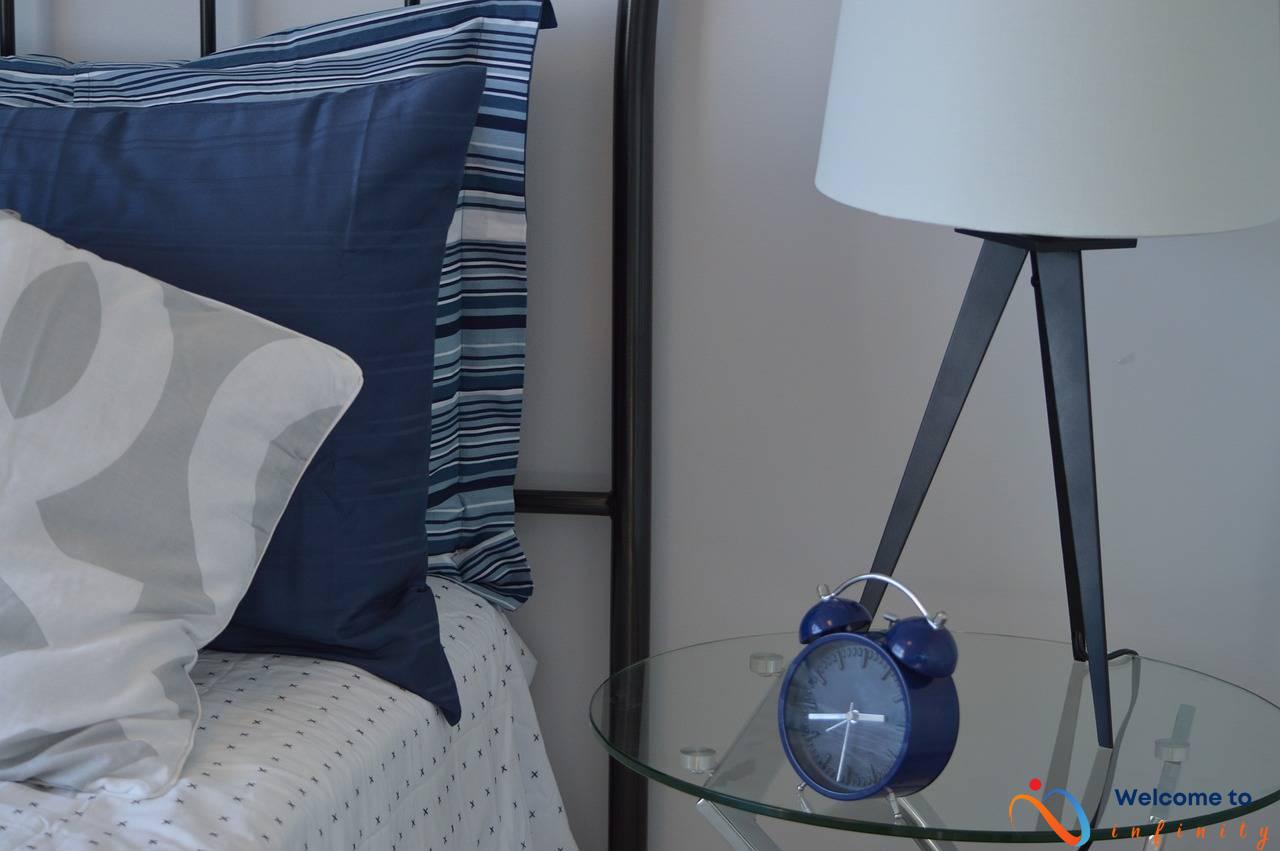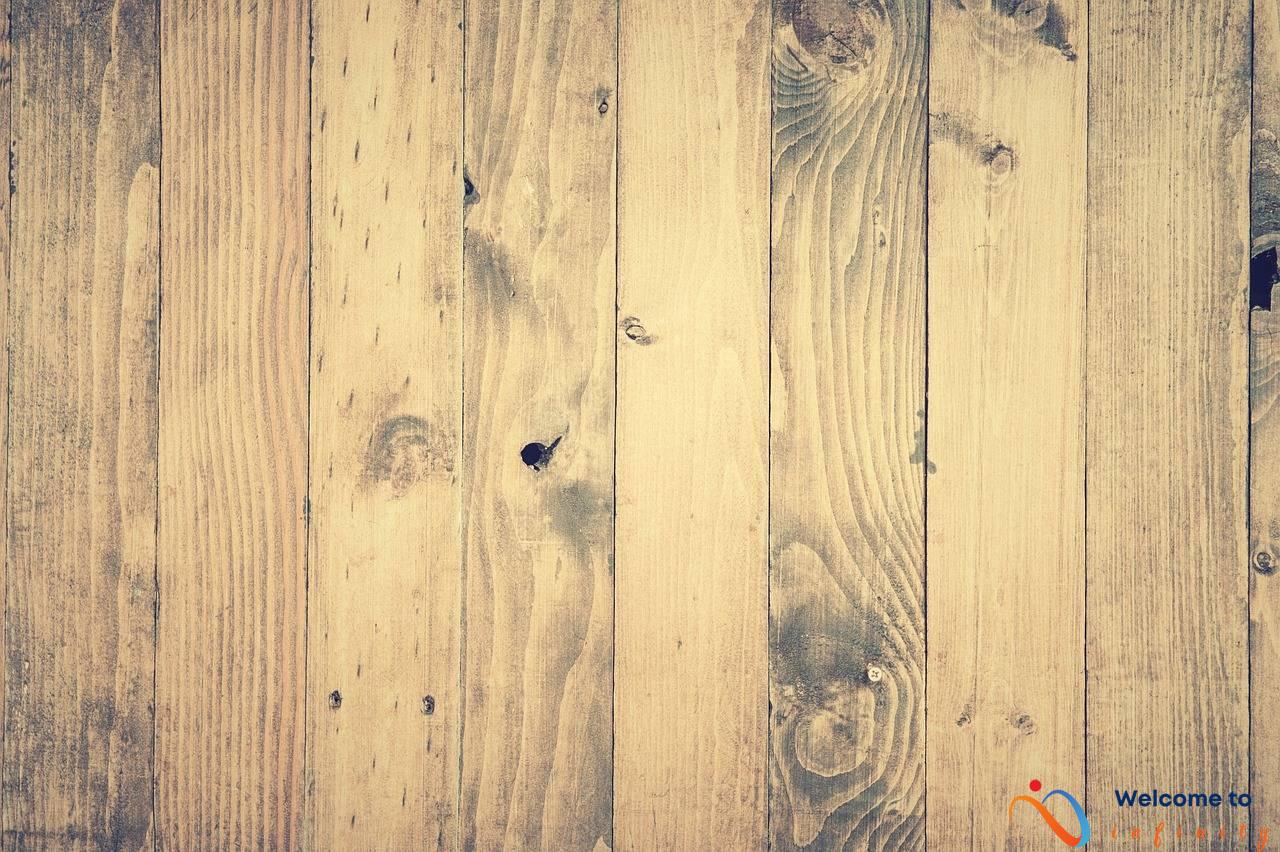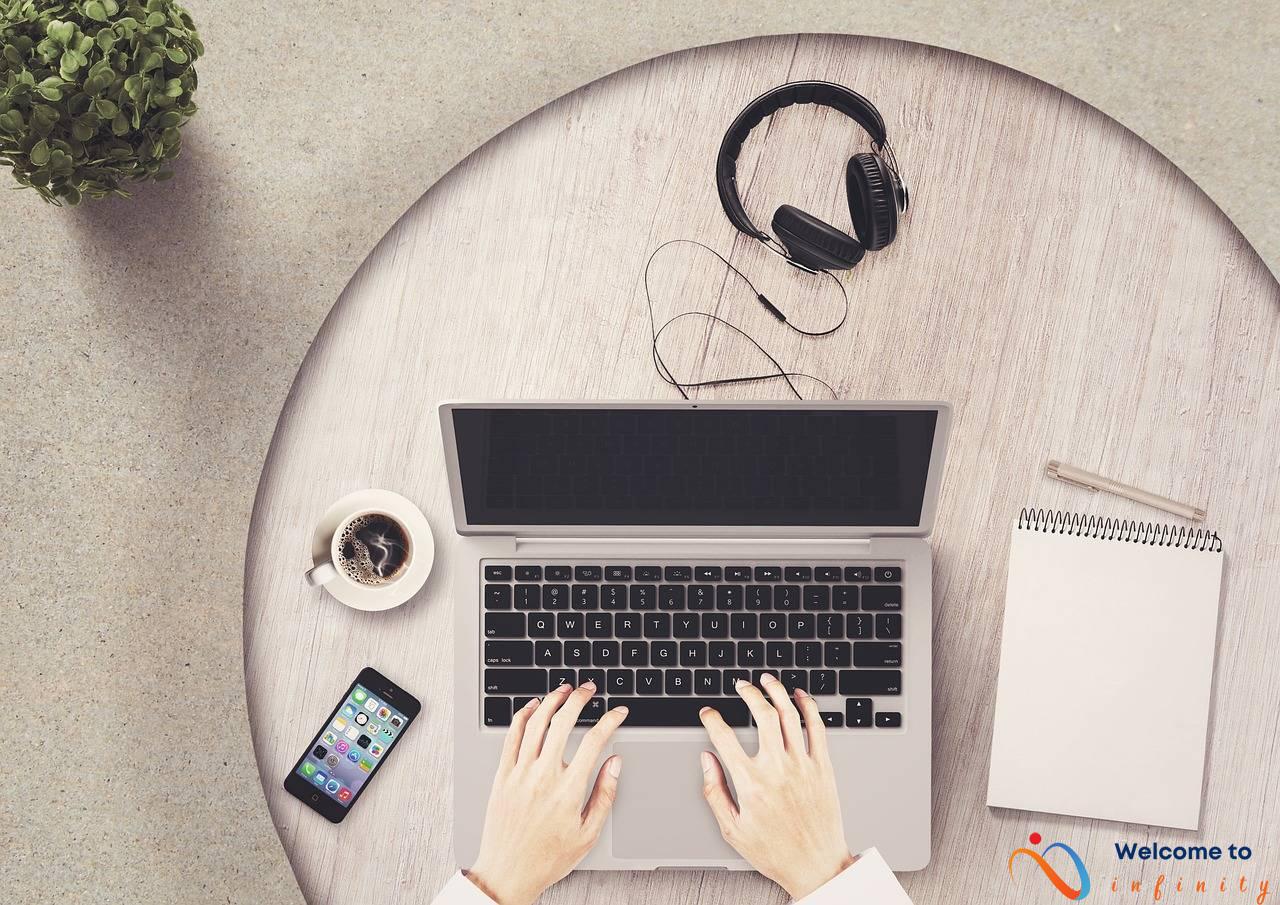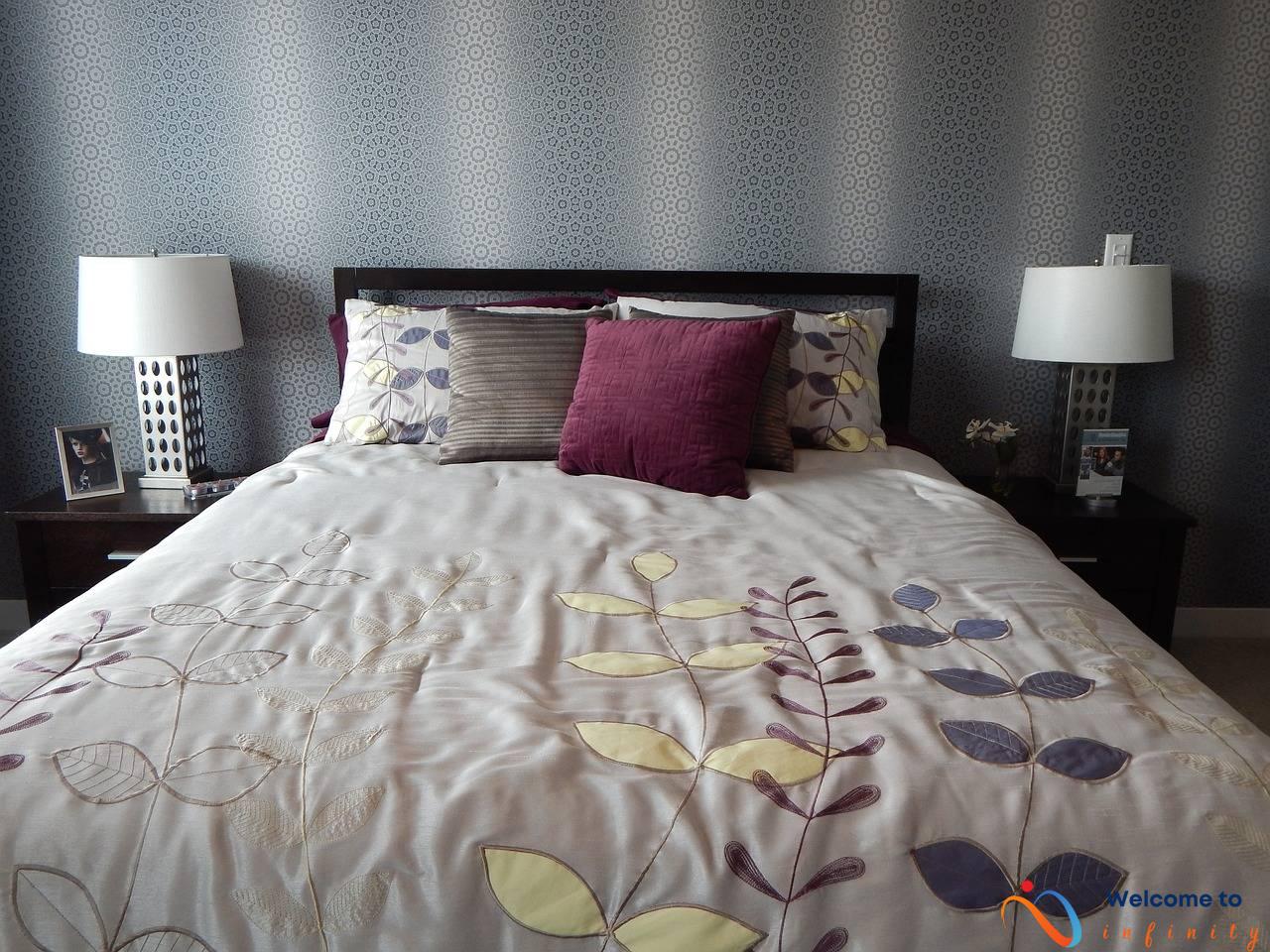Are you finding it difficult to focus on your work because of a cluttered home office desk? A disorganized workspace can make it challenging to be productive and can increase stress levels. On the other hand, an organized desk can provide a sense of calm and help you work with more focus and efficiency.
So, where do you begin? To start, declutter your desk by removing any items that are no longer needed. Next, categorize your essential items into folders and invest in desk accessories like pencil holders and paper trays to keep everything in place and within reach.
Make use of vertical storage like bookcases and shelves to keep frequently used items nearby, but off the desk surface. Label everything with clear, descriptive tags to make finding important documents or cables easy and efficient.
Finally, personalize your workspace with motivational posters or vibrant artwork to encourage you to stay focused and motivated. Follow feng shui principles to enhance the energy flow of your desk and choose natural tones to keep the workspace calm and relaxing. Remember to maintain your workspace regularly, putting everything back where it belongs, so you can stay organized and focused on your work.
First Things First: Declutter
Before you start organizing your desk, decluttering is a must. Remove any unnecessary items that no longer serve their purpose and add to the clutter on your desk. Have a designated trash bin nearby to dispose of any unwanted items. Sort important documents into categorized folders to reduce clutter and make it easier to locate them when needed.
Take the time to go through your desk drawers and remove any items that are no longer useful. Create a system for organizing your items. For instance, pens and pencils can be placed in a holder, while papers can be arranged in stackable trays. By decluttering and organizing your desk, you will create a more functional space that will increase your productivity.
- Remove any non-essential items from your desk
- Sort important documents into categorized folders
- Create a system for organizing items
- Declutter regularly to maintain an organized workspace
Invest in Desk Accessories
When working at a home office desk, it is essential to keep the workspace organized and tidy to increase productivity. One way to achieve this is by investing in desk accessories. Desk accessories such as a paper tray, desk organizer, or pencil holder are designed to keep desk items neatly organized and within easy reach, reducing clutter and promoting productivity.
Investing in a paper tray can aid in stacking papers neatly, preventing them from piling up and taking up desk space. A desk organizer, on the other hand, is perfect for storing small office supplies like pens, paper clips, and sticky notes, keeping them in their proper place and preventing them from rolling around on the desk surface.
Pencil holders are designed to store pencils, highlighters, and other pens, freeing up desk space and making them easy to locate when needed. Additionally, a pencil holder can be used to organize other items, such as scissors, rulers, staplers, and erasers, removing them from the desk surface.
In conclusion, investing in desk accessories such as a paper tray, desk organizer, or pencil holder can be beneficial for organizing desk items, reducing clutter, and promoting productivity. These desk accessories are affordable and easy to find, making them a simple solution for organizing a home office workspace.
Go Vertical
Go Vertical
Are you struggling with limited desk space? Utilizing vertical storage solutions can help you make the most of your workspace and increase efficiency. Shelves and bookcases can keep books, binders, and office supplies off your desk surface, giving you more room to work. Additionally, wall organizers like bulletin boards and file holders can allow you to keep important documents easily accessible while freeing up desk space.
When choosing a vertical storage solution, consider the size and weight of the items you plan to store. A heavy bookcase may not be the best fit for a small home office, while multiple wall organizers can provide flexibility in rearranging your workspace as needed. Furthermore, positioning vertical storage near your workspace can make grabbing supplies and equipment quick and easy.
Another great way to utilize vertical space is to use hanging organizers. These come in all shapes and sizes, from pouches and pockets to file holders and pen cups. Hanging organizers can easily be attached to the wall or the side of a bookshelf and provide a great way to keep desk items within reach without sacrificing surface space.
So, forget about cluttered desktops and limited space. By going vertical and using creative storage solutions, you can transform your home office into a functional and efficient workspace.
Label Everything
Labeling is an essential tool to reduce clutter and increase efficiency in a workspace. It's disruptive when you have to search through a stack of cables or folders to find what you need. By labeling items such as cords, file folders, and storage boxes with clear, labeled tags, it's easy to find what you need the first time.
Labeling can help with organization as well, particularly when it comes to cords. Cable ties are an inexpensive and efficient way of bundling cords together. Labeling cords also makes it easy to identify which cord belongs to which device.
When it comes to file folders and storage boxes, labeling helps categorize and identify items. By labeling, you can quickly locate files, knowing they are where they should be. Instead of having to shuffle through each one, you can save time and improve productivity by knowing which folder to go to right away.
As an additional tip, consider using color-coded labels to categorize items further. This method makes it easy to identify files or boxes with just a glance. For example, using pink labels for financial documents and green for client files.
Overall, labeling is a simple but highly effective way to organize your home office desk, reduce clutter, and increase productivity. Utilize it and watch your efficiency and productivity soar!
Use Cable Ties
If you find yourself struggling to keep cords and cables organized, using cable ties can be a game-changer. These small fasteners are made of nylon or Velcro and can help bundle cords together creating a sense of order on your desk. This not only improves the aesthetics of your workspace but also frees up available space on your desk surface.
Using cable ties can eliminate the tangled mess of cords and make it easier to identify individual cords, which saves time when you need to plug or unplug something from your computer. You can use small cable ties to organize cords on your desk, or you can buy longer ties to bundle cords behind your desk or furniture.
To organize cords and cables using cable ties:
- Unplug all the cords and cables from your devices and the power socket.
- Gently detangle the cords to remove any knots or tangles.
- Group similar cords together, such as power cords or HDMI cables.
- Wrap a cable tie around the group of cords and pull the tie tight.
- Adjust the position of the cords, if necessary, to ensure they are neat and tidy.
- Repeat with other groups of cords until you have organized them all.
Using cable ties not only helps keep your workspace organized, but it can also help prevent accidents by reducing the number of cords on the floor.
So, invest in cable ties today, and say goodbye to the cluttered mess of cords and hello to a neat and organized workspace!
Organize Drawers
One of the best ways to keep your home office desk tidy and efficient is by organizing your desk drawers. This can be accomplished by categorizing items and designating specific drawers for each category. You can make use of drawer dividers or organizers to keep smaller items in place and make them easier to find. Here are some tips on how to organize your drawers:
- Remove all items from the drawer and sort them into categories.
- Create a labeling system for each drawer and label them accordingly.
- Utilize drawer dividers to separate different items.
- Designate specific drawers for specific items like office supplies, paperwork, and stationery.
- Keep frequently used items in the top drawer for easy access.
- Place heavy items at the bottom of the drawer to prevent them from shifting around.
By organizing your desk drawers, you can quickly find what you need at any given time, which can improve your productivity. Also, maintaining a clutter-free workspace can help you to stay focused and calm, and reduce stress levels, which eventually leads to a better work outcome.
Personalize Your Space
Personalizing your workspace can help to increase productivity by providing inspiration and motivation to work. Simple touches like motivational posters, vibrant artwork, or even a desk plant can make the workspace more personalized and inviting.
If you're not sure where to start, consider adding a vision board with images and inspirational quotes that represent your goals and aspirations. Alternatively, you could set up a small bulletin board to pin reminders, important documents, and motivational quotes or affirmations.
Another way to personalize your space is to add pictures of friends, family, or pets that make you happy. This provides a reminder of the important things in your life and can offer a positive mental break when the workday feels overwhelming.
When choosing artwork or other decorative items, keep in mind your personal style as well as the overall look and feel of your workspace. Aim for a cohesive and calming vibe by selecting pieces with a similar color scheme or theme.
By personalizing your workspace with décor that inspires and motivates you, you'll create a space that is uniquely your own, and that can boost productivity and creativity.
Feng Shui Your Desk
Incorporating feng shui principles in your home office desk can enhance your productivity and efficiency. Feng shui is an ancient Chinese practice that aims to harmonize individuals with their environment to achieve a healthy and balanced life. Here are some tips to feng shui your desk:
- Desk Placement: Place your desk in a commanding position that allows you to face the door. This allows you to be in control of your space and to see opportunities as they come your way.
- Avoid Clutter: Declutter your desk and keep only the essentials. Too much clutter can create negative energy and affect your productivity.
- Elements: Incorporate the five elements of feng shui – wood, fire, earth, metal, and water – in your workplace. You can add a plant, a candle, picture of a mountain, a metal bookend, or a water fountain on your desk, depending on the element you need to balance your energy.
- Colors: Colors can have a significant impact on your mood and energy. Choose colors that promote productivity and focus, such as blue, green, or beige, for your walls and accessories.
- Lighting: Proper lighting is crucial in feng shui. Natural light is ideal, but if that's not possible, use artificial light that mimics natural light. Maximizing the light in your workspace can boost your energy and mood.
By applying these feng shui principles in your workspace, you can create a balanced and harmonious environment that promotes productivity, creativity, and positivity.
Choose Desk Location Wisely
= Placing your desk at the entrance of the room provides a view of everything within the workspace. You are able to see what is going on in the surroundings, achieving a sense of control and awareness. If possible, place your desk in a position that does not face a wall, but rather has a view of the outdoors or the rest of the room. This placement provides a sense of openness, as you are not closed off from the surroundings. Remember, always aim for natural lighting by positioning the desk near a window. Natural light is crucial for workplace productivity and enhancing mental energy. On the other hand, direct sunlight can be distracting, so consider the position of the desk in relation to the window. If it's not possible to have natural light, utilize desk lamps with warm lighting that emulate natural sunlight.
Keep Colors Natural
When it comes to organizing your home office, it's not just about decluttering and utilizing desk accessories, but also about creating a calming and rejuvenating workspace to increase productivity and efficiency. One simple way to do this is by choosing natural tones for your workspace.
Bright colors can be distracting and overwhelming, especially in a small workspace. Natural tones like greens, blues, and browns can create a sense of calm and make the workspace feel more inviting. A study published in the Journal of Environmental Psychology found that people who worked in a space with a view of nature reported feeling less stressed and more focused than those without a view.
- Choose light blues for a calming effect
- Use muted greens for a sense of balance and harmony
- Opt for warm browns for a cozy and welcoming atmosphere
In addition to choosing natural tones, consider incorporating plants and natural elements such as wood and stone to create a more relaxed and organic atmosphere. Just make sure to choose low-maintenance plants that won't become a distraction themselves.
Overall, the colors you choose for your home office desk can have a significant impact on your productivity and mood. By opting for natural tones and creating a calming workspace, you'll be able to stay focused and get more work done.
Maintain Your System
Maintaining a clean and organized workspace is not a one-time task but rather a continuous effort. To maintain a well-organized desk, it's essential to keep items in their assigned places after use, so everything is within reach when needed.
Commit to at least a few minutes each day to tidy up your desk before leaving work. This practice creates a habit, and your mind will begin to take note of where everything belongs. After a while, you may not even have to consciously think about maintaining an organized workspace anymore.
- Make sure you have a trash bin close by and dispose of any unneeded paper, trash, or office supplies at the end of each day.
- Quickly file any documents, so papers don't pile up on your desk.
- Return office supplies such as staplers, scissors, or pens to their assigned drawers or organizers.
Another way to maintain an organized system is to do a weekly review of your workspace. Take a few extra minutes to clean and declutter your desk, dust your keyboard and computer screen, and dispose of any old or unnecessary papers. This strategy ensures clutter doesn't accumulate and gives you a clear mind to start off your week.
By establishing a consistent habit of returning desk items to their designated places and routinely decluttering your workspace, you will save time and increase productivity. Having an organized workspace reduces stress and helps maintain focus and concentration, leading to improved work quality and higher creativity.





